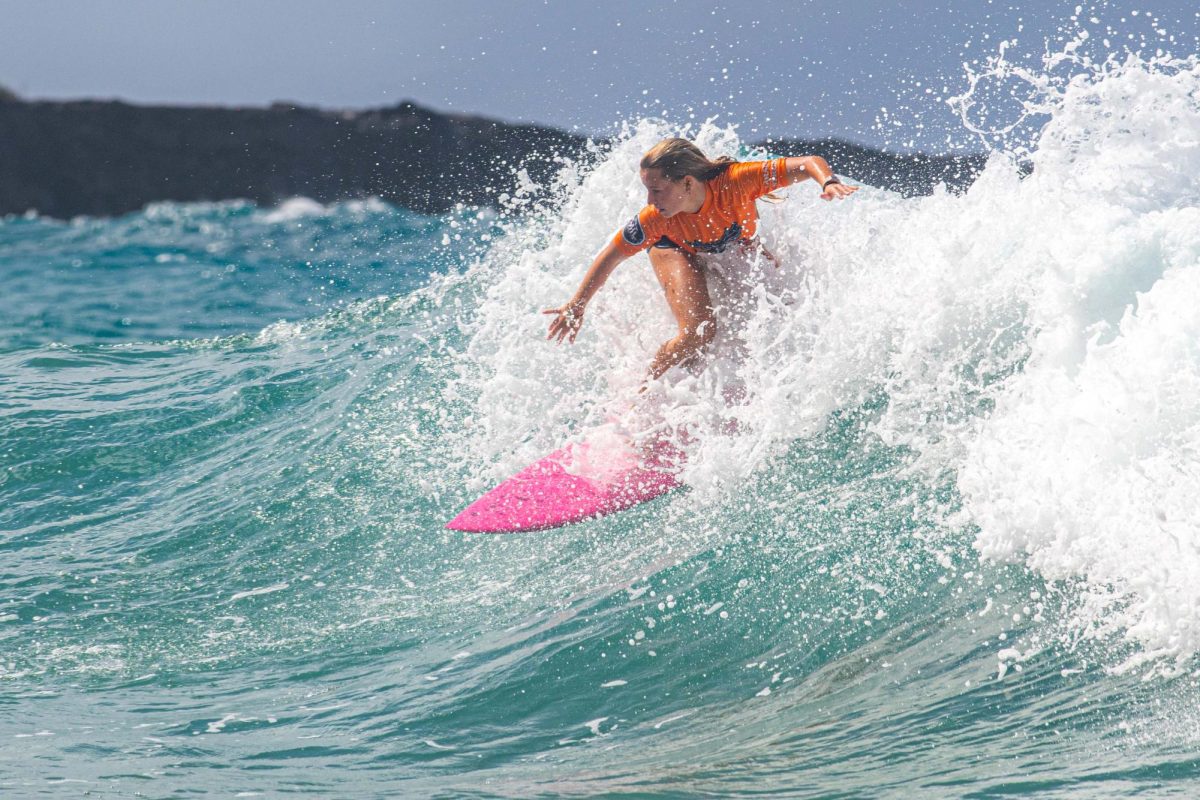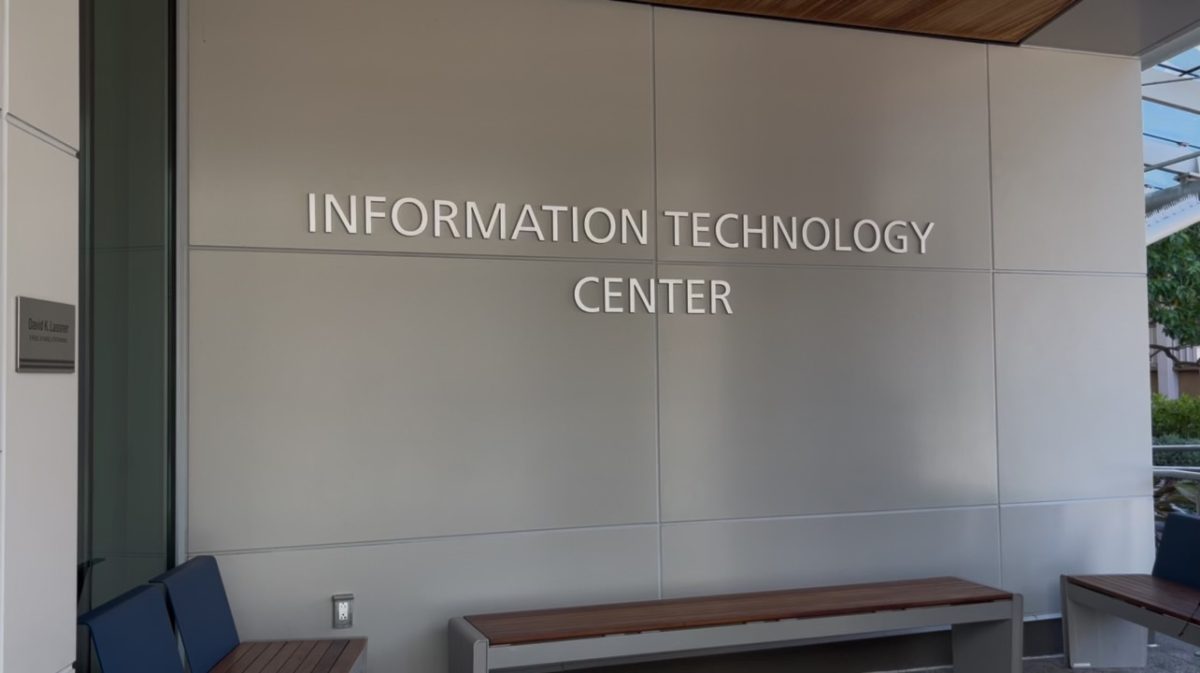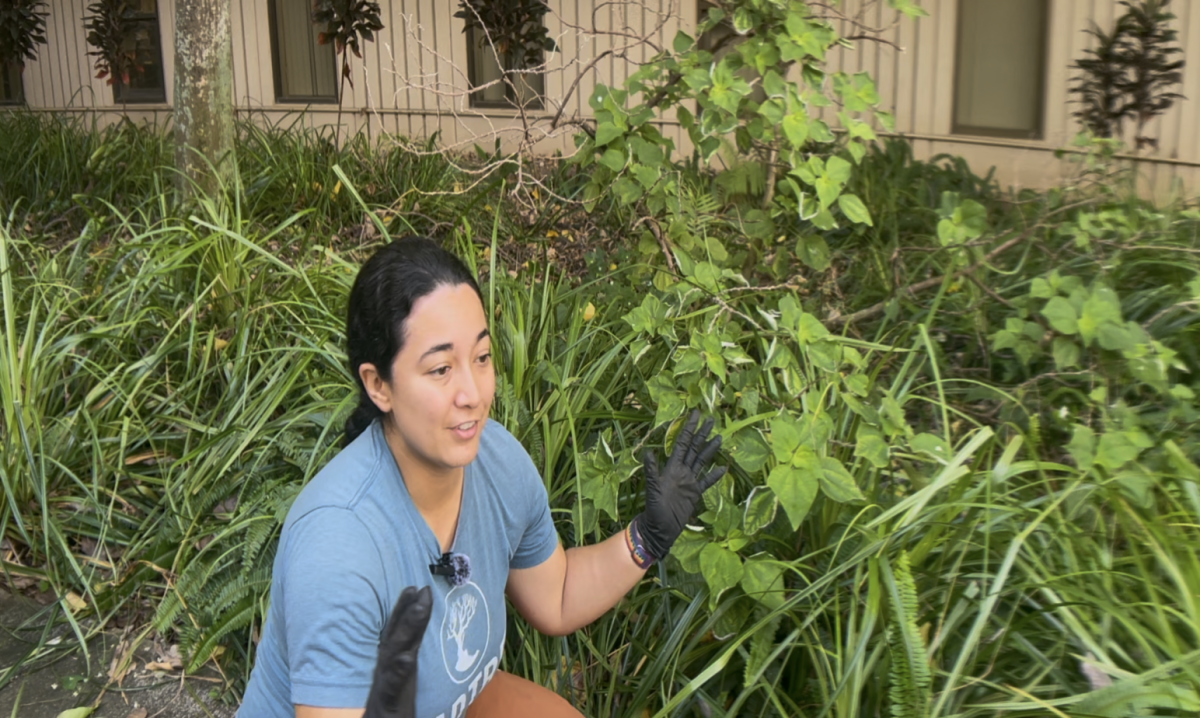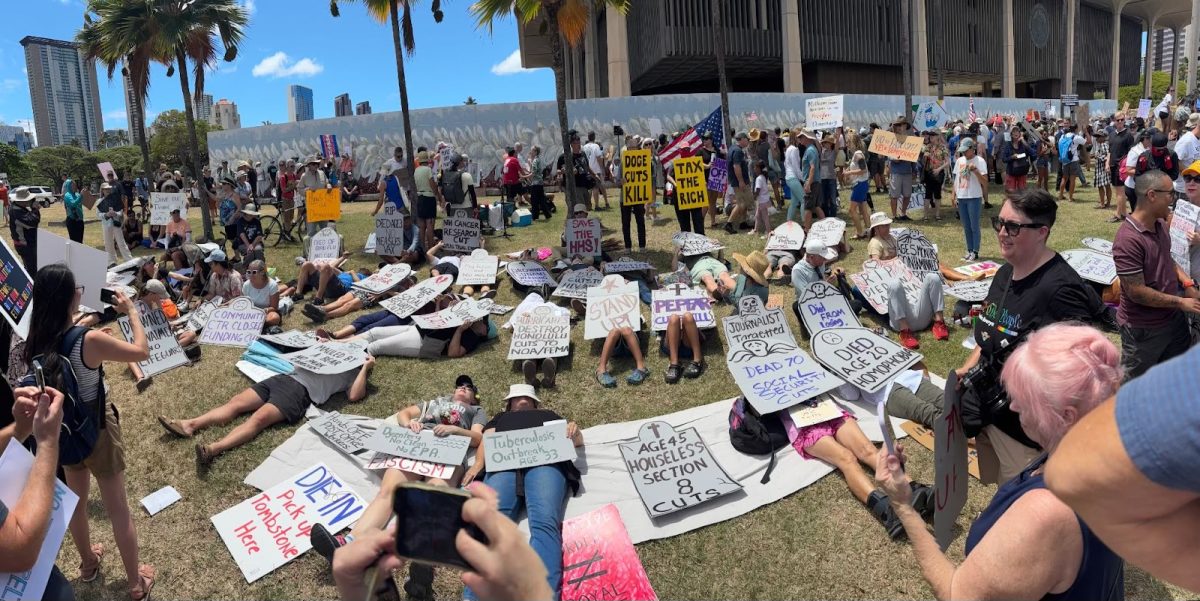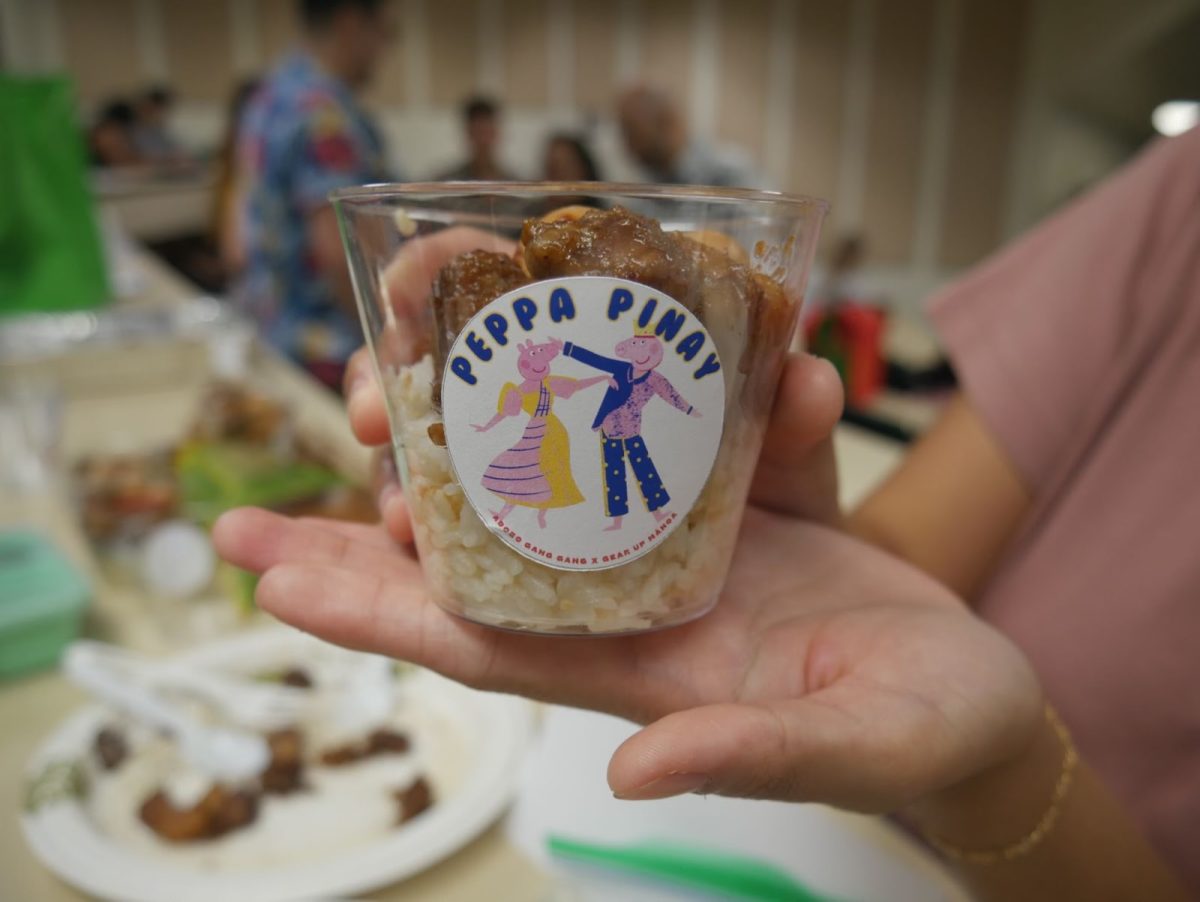Students at Waipahu and Farrington High Schools, where approximately half of the student body is of Filipino descent, can now explore their cultural history through the CHR 2300 Filipino History Culture course. This educational milestone was achieved through the collaborative efforts of Marissa Halagao from Punahou High School and a student-led team, including co-director Raymart Billote, a 20-year-old student from the University of West O‘ahu. In an interview for The Mānoa Mirror, Raymart discusses his passion for education and his involvement in the project, aiming to empower students through a deeper connection to their cultural heritage.
Raymart, tell our readers about yourself.
My name is Raymart Billote, I am a first–generation immigrant from the Philippines. I moved to Hawaii in 2017 with my mom and my younger brother and I started here as a freshman in high school at Waipahu High School. I graduated from Waipahu High School, class of 2021 and now, I am majoring in secondary education with a concentration in social studies. When I was a senior, I joined this initiative that fights against the underrepresentation of Filipinos in education and this initiative is the reason why I went into education.
As a student majoring in secondary education, how do you plan to use this in the future?
My primary goal once I get my bachelors degree in education is to work at Waipahu High School. I have been planning to teach the course that the Filipino Curriculum Project has helped design with experts and teachers, and this is called Filipino History Culture. Basically, my plan is to teach that course once I get my degree.
What inspired you to pursue a career in education?
When I was a senior in high school, Marissa Halagao was a sophomore in Punahou School and when they were required to take this Asian course studies at her school, she noticed that Filipinos werenʻt included even though it was Asian Studies. The course was mainly centered on East Asian countries so she was like “I want to change this” and she connected with a couple of students.
For some reason, she found me through my English teacher and my teacher told me about her initiative that she was starting, so I said, “Sure, I would like to meet with her.” So, I met with her and then she talked about how a lot of Filipinos in Hawaii, especially those who were born here, don’t really learn about their culture. Then, I thought that is actually true because I always see this problem with some of my cousins who were born here like they don’t know how to speak, but also they don’t know their history and their heritage. That is when I felt, “Okay, I see the problem,” and then it kind of just hit me, “Oh I want to be a teacher now.” So now, I am a Paraprofessional Educator at Waipahu High School, working my way up to be a history teacher.
What was your experience like in high school as a Filipino immigrant?
It is actually so funny because people would expect that as an immigrant I would feel like I am not part of the community, but I did not feel that much of a disconnection because I met a lot of Filipino immigrants like myself. I was put in the English Language Learners (ELL) program and all of the kids were Pacific Islanders and Filipinos. They all spoke their first language, which was not English and we all just spoke to each other in Tagalog or Ilokano. So I felt like I never left, but at the same time, it is kind of different.
Based on my studies, I felt like it was easier here compared to the Philippines. For example, the tests were all given on different days. In the Philippines, the tests were all combined into one day, but here they kind of separate them between the days. Also, the workload is more reasonable here compared to the Philippines.
As a future educator, what do you hope to bring into your community?
As a future educator, what I hope to bring into the community is of course the Filipino culture. I really want to bring in that sense of pride in the classroom, even though they are not Filipinos. Like, I want to give them that sense of Filipino pride and to have them just really appreciate their heritage, their ancestors, and their history. Not just the history in Hawaii, but also in the United States and as well as the history back in their motherland.
Tell our readers about the Filipino Curriculum Project.
The Filipino Curriculum project started in 2021 with just five students from all over O‘ahu, so we had a student from Kapolei, Farrington, Waipahu High School, and ofcourse Marissa Halagao, the founder who is from Punahou School. So basically, we started off looking into the Department of Education (DOE) standards and also brainstorming what kind of topics we want in the course. We wanted to design it as if we are the students who are taking it, so we really picked the lessons that would really attract students, but also like not just focusing on the Spanish colonization and the American colonization, but also focusing on the pre–colonial times because we don’t really know that much about our indigenous culture in the Philippines. So, we wanted to bring in that indigenous perspective and history as well.
Fast forward to today, after 2 years, the course which is Filipino History Culture (CHR 2300) has finally been approved by the Hawaii Department of Education and it is the first Filipino social studies course to be implemented at a statewide level, in the United States at least. Even though the course is already approved by the Department of Education here in the state, it is still not offered in every school. So, we are starting off very small with just Farrington and Waipahu High School, which has a lot of Filipino student population on their campus, to offer and teach the course. Our goal now as an initiative is to widen and give more access to other schools, to be able to offer this course in their schools as well. The Filipino Curriculum Project’s main goal is basically using student voices to advocate for Filipino representation in education.
How impactful do you anticipate the Filipino Curriculum Project to be?
Right now, we have been in contact with a lot of schools all over O‘ahu, but lately we have also been in contact with a councilman in Kauai. Apparently, he is the only Filipino councilman and he reached out to us because he said he wanted to offer this course to high schools in Kauai. So, we have been in contact with Kauai High School and we are trying to get this course to as many schools as possible. We have also been meeting with a bunch of teachers from different schools where the course has not been offered yet.
I think that by talking to a lot more students as well, not just teachers or administration, but also the students who want to have this course in their school is going to help us really give that access to other schools to offer this course. The foundation of this program is basically, without student voice this wouldnʻt even happen in the first place. The way we want to implement this course is really going to be based on how many students want it in their schools. Without any student voice, this course wouldnʻt be offered in any schools.
Given that you are also a student yourself, how does it feel to work with fellow students?
Working with students has been very eye–opening because it is like you are working with people who kind of think the same as you. So, that makes things easier in a sense because you can easily get on the same page and it is easy to agree on something. Working with students has been very transformational because as a future educator this helps me, as well as knowing students’ perspectives are different from teachers perspectives, it makes me realize that students are interested in a lot of things. It brings a lot of creativity in the mix too. The experience has been very rewarding I would say.
Is the Filipino Curriculum Project considering the possibility of expanding this on a broader scale, possibly within the United States?
Not right now, but I think that is something that we should consider because we also recognize the fact that it is not just Hawaii that has a lot of Filipino population in their states. So yeah, hopefully, in the future we could promote this across the United States because it really is important. It does not matter where you are, but it is really important to know your roots, your history, and your heritage, just to get that full sense of identity. Hopefully, we could bring that to a wider community.
To conclude, is there anything else you would like to share or emphasize?
Yeah, so CHR 2300 Filipino History Culture is now available and it is just a matter of having students demanding this in their school administration and to actually take the course, to keep it alive. So, I really encourage all high school students, no matter if they are Filipino or not, to take this course and if you are a college student, I would suggest to have your siblings, cousins, or anyone you know that is in high school to take this course because it is really important to have them see themselves in the classroom. This is something that we, the Filipino Curriculum Project, have wanted and that is why we are doing this, so students who will take this course will hopefully appreciate more of their Filipino ancestry and their history.


